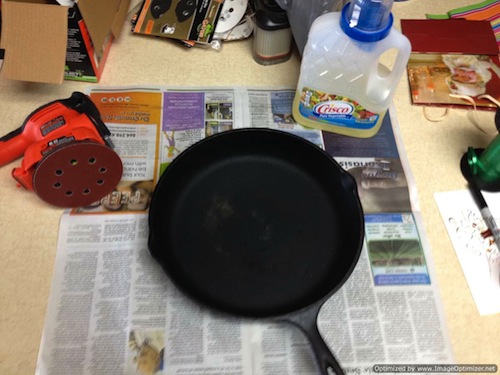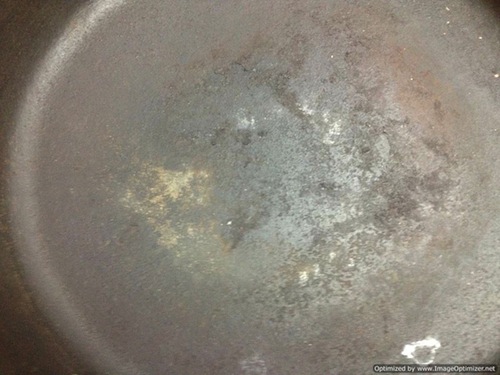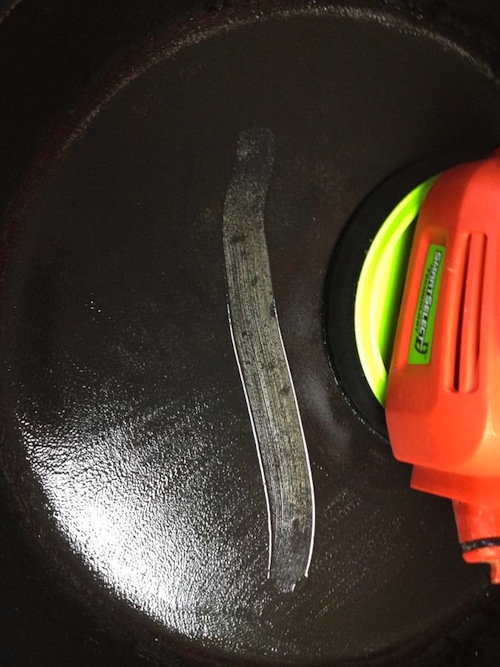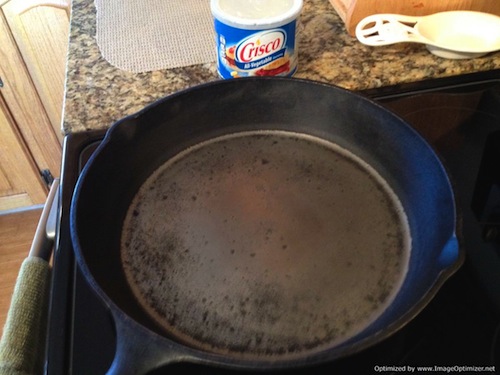
*Cast Iron Experiment*
By: Casey
29 June 2016
So like most, I love cast iron. I don't have as much as some, but I do have my grandmother's 8" skillet that I grew up watching her cook in, and I love it!
I also have a 10" skillet, that I'm not sure where it came from, or when, but has never really had a place of honor. It's never been the best cooker, no matter how many times I seasoned it, it just felt rough, and everything stuck to it.
Then I read an article that talked about the main difference between modern and historic cast iron, was turning. Apparently, back in the day, after they had cast the pan, it was then turned on some sort of specialized lathe, to ensure the cooking surface was smooth as glass. This is a step that, apparently, isn't done anymore. I don't know if it's just a cost saving measure or time saving measure or what, but it means the cooking surface is rougher, and harder to make non-stick.
Researching this more, I found a video on YouTube that addressed how to fix this. Unfortunately, I didn't think to save the link. It was a guy, taking a brand new Lodge brand pan, and making it non-stick. He took a grinder, and basically ground down the entire interior surface of the pan to shiny metal, then a sander with increasing grit to polish it smooth. Then he wiped it with oil, put it on the heat, cracked an egg into it, and demonstrated it sliding around while cooking.
I don't have a grinder, but I do have an orbital sander, so off we go to the project.

Unlike the guy in the video, who started with a fresh pan, and used water, I was starting with a used pan, and decided to use a little vegetable oil. I figured vegetable oil would be better than water, as it would still keep things cool and keep the dust down, but I wouldn't have to worry about the water reacting with the bared metal, and causing rust.
Here's a close up of the cooking surface of the pan:

As you can see, it's not only uneven, but unevenly seasoned. I'd get a nice layer of seasoning built up, and it would end up flaking off. I'm assuming due to the little bumps in the surface.
Here's a working shot:

As you can see, I'm getting up a lot of the seasoning, while trying to smooth the surface down.
Here's the final shot, after I finished:

As you can see, I didn't go down deep into the pan, as there are still some low spots in it. However, I did get rid of all of the high spots, which is what was affecting it's cooking ability.
I cleaned it up thoroughly, then heated and treated with Crisco, and repeated several times.
I've since been using this pan regularly, a couple of times a week, and it's performance is hugely improved! It's not perfectly non-stick, but it's a ton better than it was. It's starting to get a little darkening and new patina. I'm certain that when I get it built back up to an even black, it will be nicely non-stick.
So, the newer cast iron, is not beyond redemption, it simply requires a bit more effort than the historic pans.
Hope this helps!
Casey
www.alpharubicon.com
All materials at this site not otherwise credited are Copyright © 1996 - 2016 Trip Williams. All rights reserved. May be reproduced for personal use only. Use of any material contained herein is subject to stated terms or written permission.